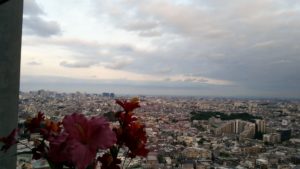Time capsule
Close to the subway station of Shiodome, at Ginza’s outskirts, I remember coming across Nakagin Capsule Tower, one of the most iconic buildings in a city full of iconic.
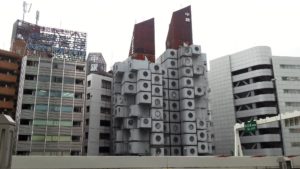
The capsule tower is an apartment complex made of modules. According to architect Kisho Kurokawa’s vision they were meant to be replaced as they got old, making the building evolve. And this organic evolution gave its name to the optimistic trend of metabolist architecture.
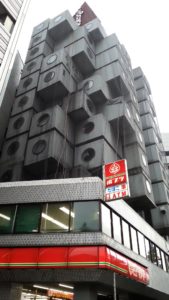
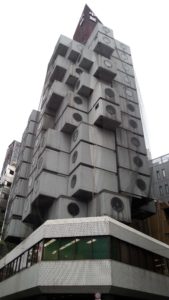
That one turned out an ambitious plan and never materialized. The building is now run-down, although some capsules are still in use. On the other hand, its style seems to have defeated time.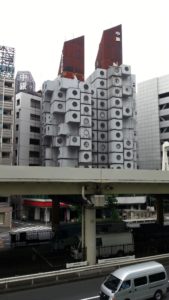
Two of the faces of twentieth century
(The first appearance of this post was on iaponia.gr)
The area around the subway station of Azabu-Juban brings together two of the faces of Tokyo past: futurism and shitamachi.
In 1971 Andrei Tarkovsky shot the science fiction classic “Solaris”. In an evocative sequence the hero is driven through the streets of a city before he leaves for his trip to space, and a discreet feel of futuristic life is achieved. The sequence is called “City of the future” and was shot in Tokyo with no special effects.
One of the filming locations was the junction at Azabu-Juban.



Of course today it’s not only the bridge but also the buildings from somewhere around the ‘70s.
At the same time, all you have to do to find one of the once omnipresent streams is to take a turn a couple of blocks further away…
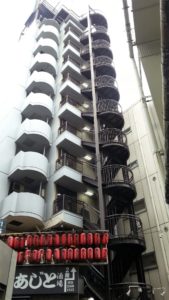
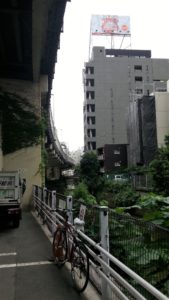

…and, in doing so, pass the invisible border towards a tiny shitamachi neighborhood.
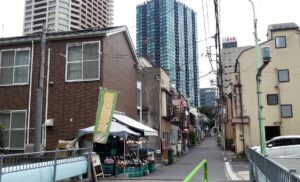
Shitamachi was the downtown aesthetic in the beginning of the 20th century, the sort of passage from Edo to Tokyo.

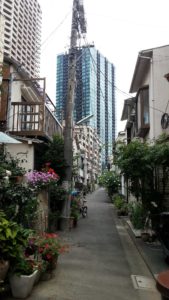
The archipelago of the “city of the future” still has islets of small streets with wooden buildings, flower pots on tarmac and residents that somehow look as if they always belong there.

Anyone trying to understand the picture formed by the puzzle called Tokyo will get a few additional pieces by making a stop at Azabu-Juban.
Seoul squares
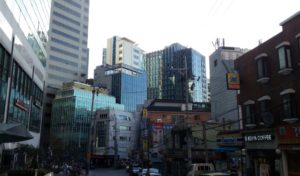
Convenience stores and coffee shops and tetris buildings. Someplace in the sprawling downtown.
Taking Songshan in
Looking back to a previous spring, fragments in memory from arriving to Taipei. And waking to a calm Saturday morning in the area around Songshan Station.
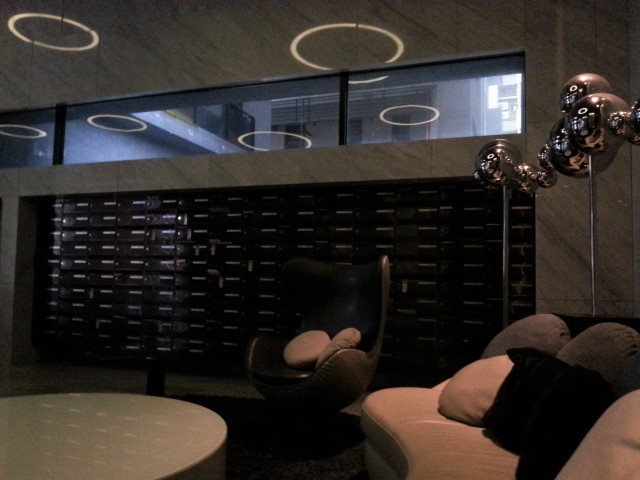
That was a pleasant building, especially to a traveller looking for space to breath. However the architecture in the surrounding blocks varies.
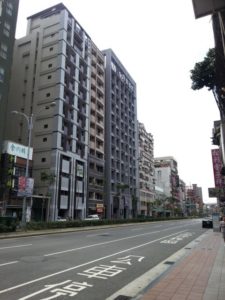
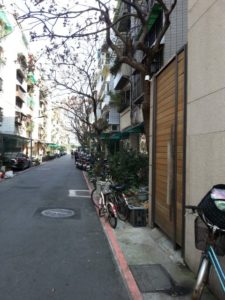
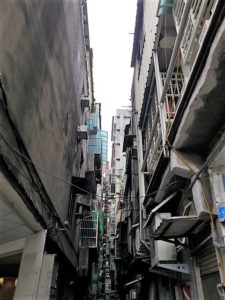
All of it typical Taipei though.
The interior cannot be told from the facade; some of these flats will be renovated new-asian-all-pearly style and some will be basic and maybe with bug issues.
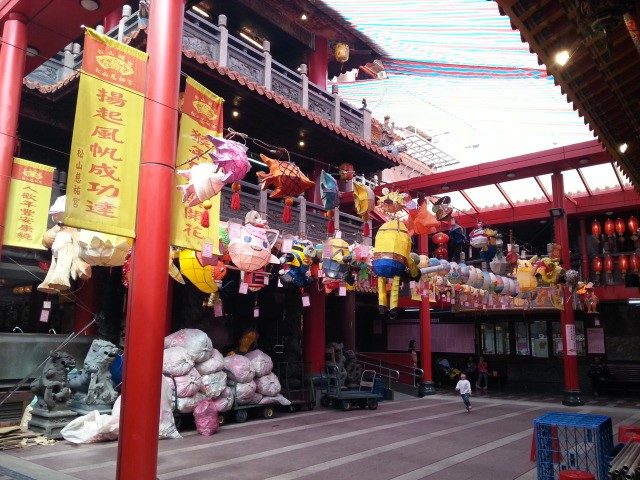
What doesn’t change throughout is the energy in all times of day and places, even empty streets. Or temple backyards getting ready for the day.
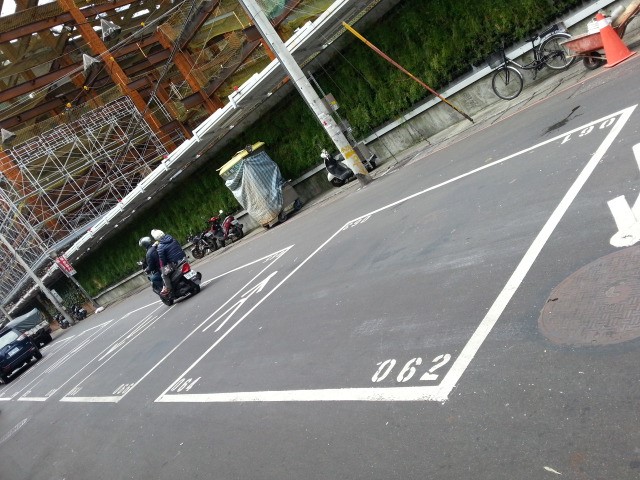
And impeccable alleys that become a maze of people, shouts, money and food a few hours later (aka Raohe night market).
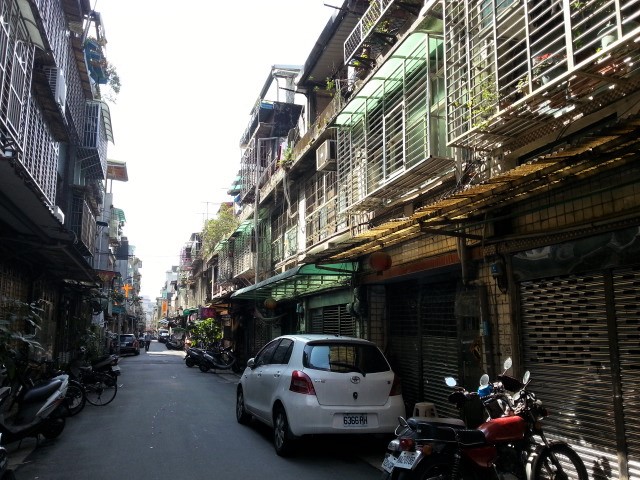
Urban seasons
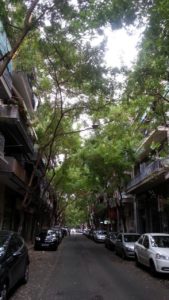
The autumn arrival as it’s happening – downtown Athens.
Inverted ladybug and street view
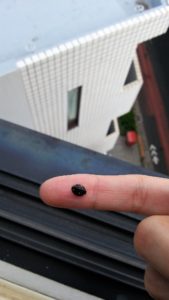
Bombardment by high standards
Two years ago these days … this traveller was in the middle of her only massive cultural shock ever.
Landed on Tokyo to spend two months and overwhelmed by the amount and totality of design, beauty and purpose everywhere around; within a week I lost weight, got a bunch of white hair and wasn’t sleeping well; it took me days to simply start catching the subway and go sightseeing.
Don’t get this wrong: the feeling was ecstasy. The whole time. Continuously. I was under constant bombardment by high standards.
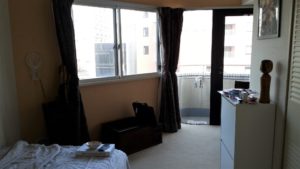
A few photos of the mind-blowing flat and view. It was warm and fuzzy, it had a bathroom unit and a kitchen unit, and the elevated metropolitan express highway was passing only a few meters from the third-floor balcony. (At nights I was feeling that some mythical golden river kept streaming by.)
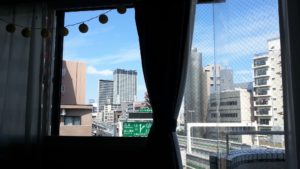
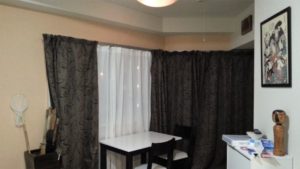
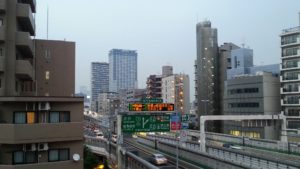
Dallas, London
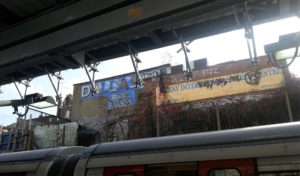
View from the carrot tower
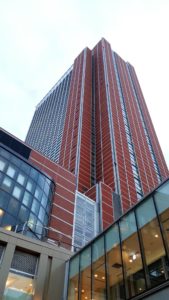
The Carrot Tower in Setagaya is where Pokemon come from. The 22nd floor houses Game Freak headquarters.
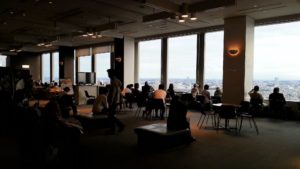
While the 26th floor boasts a public sunset viewing lounge.
